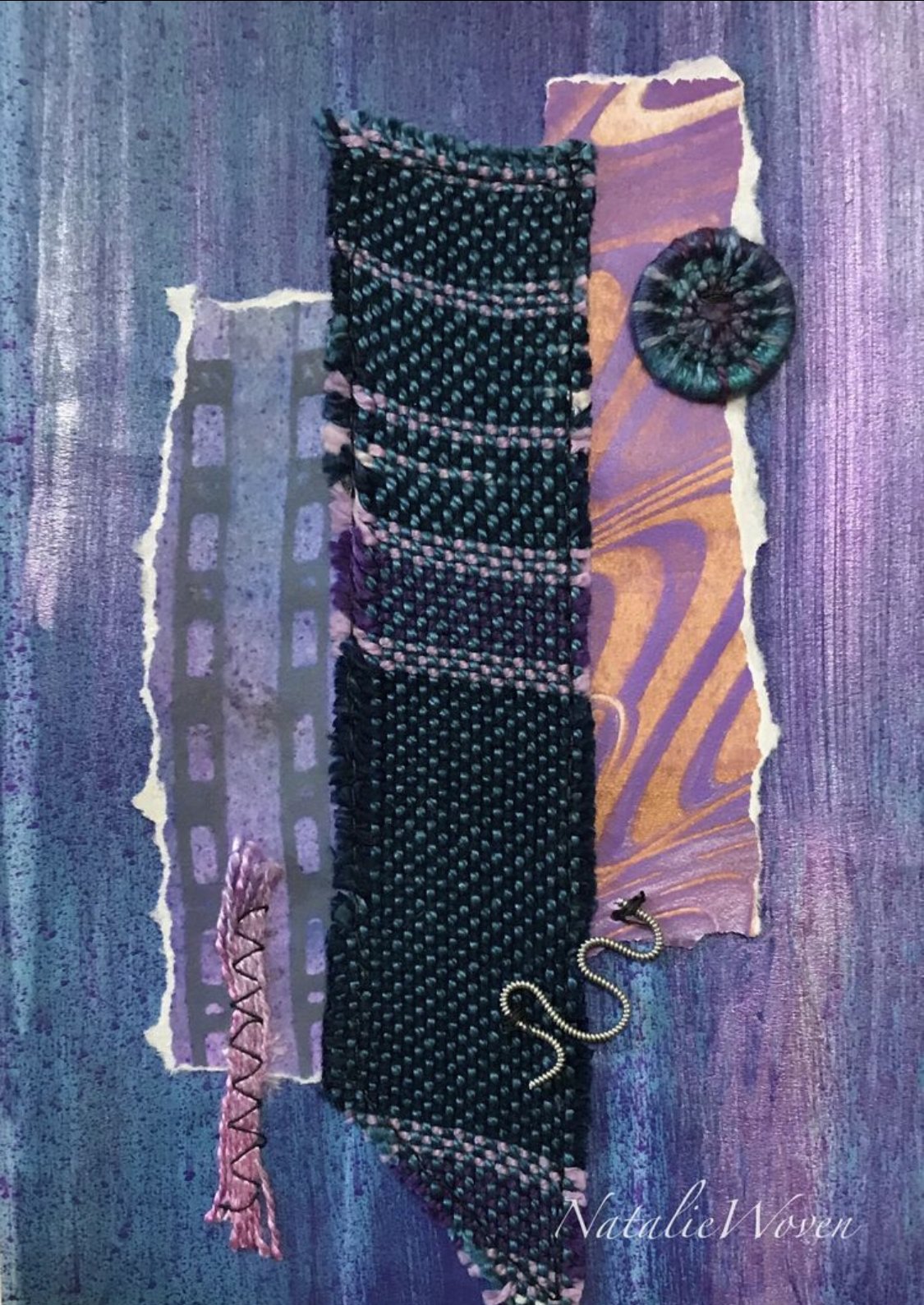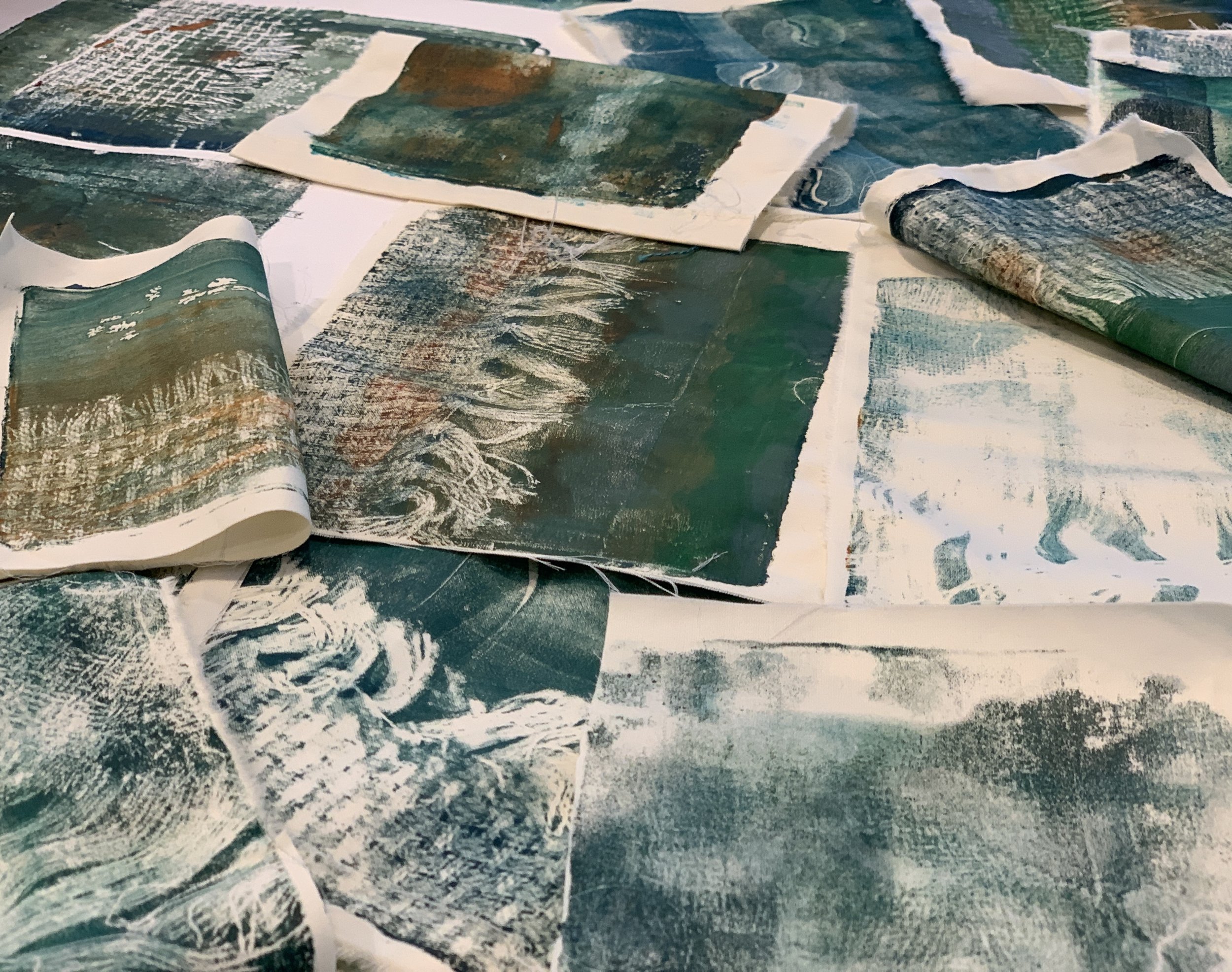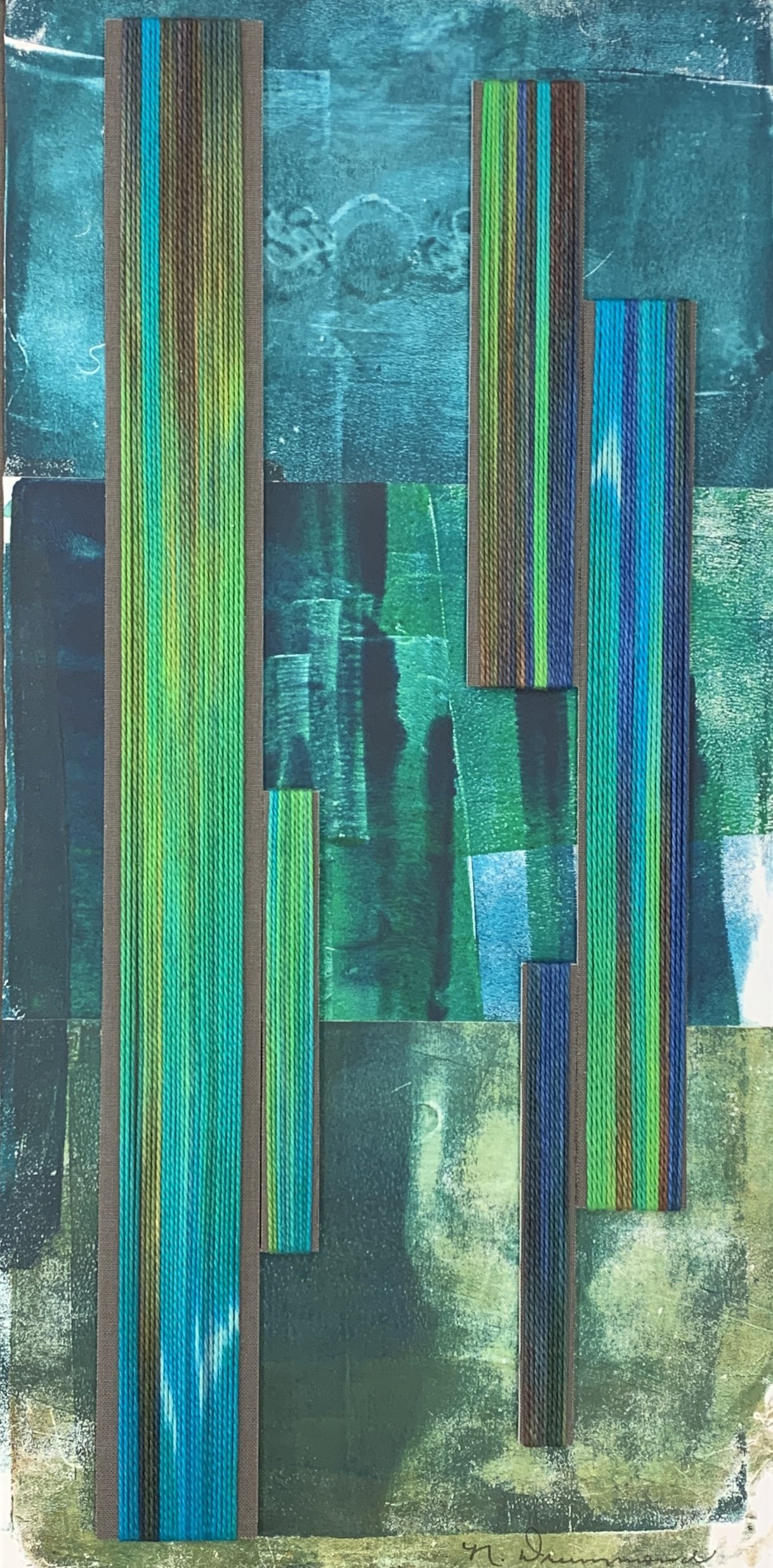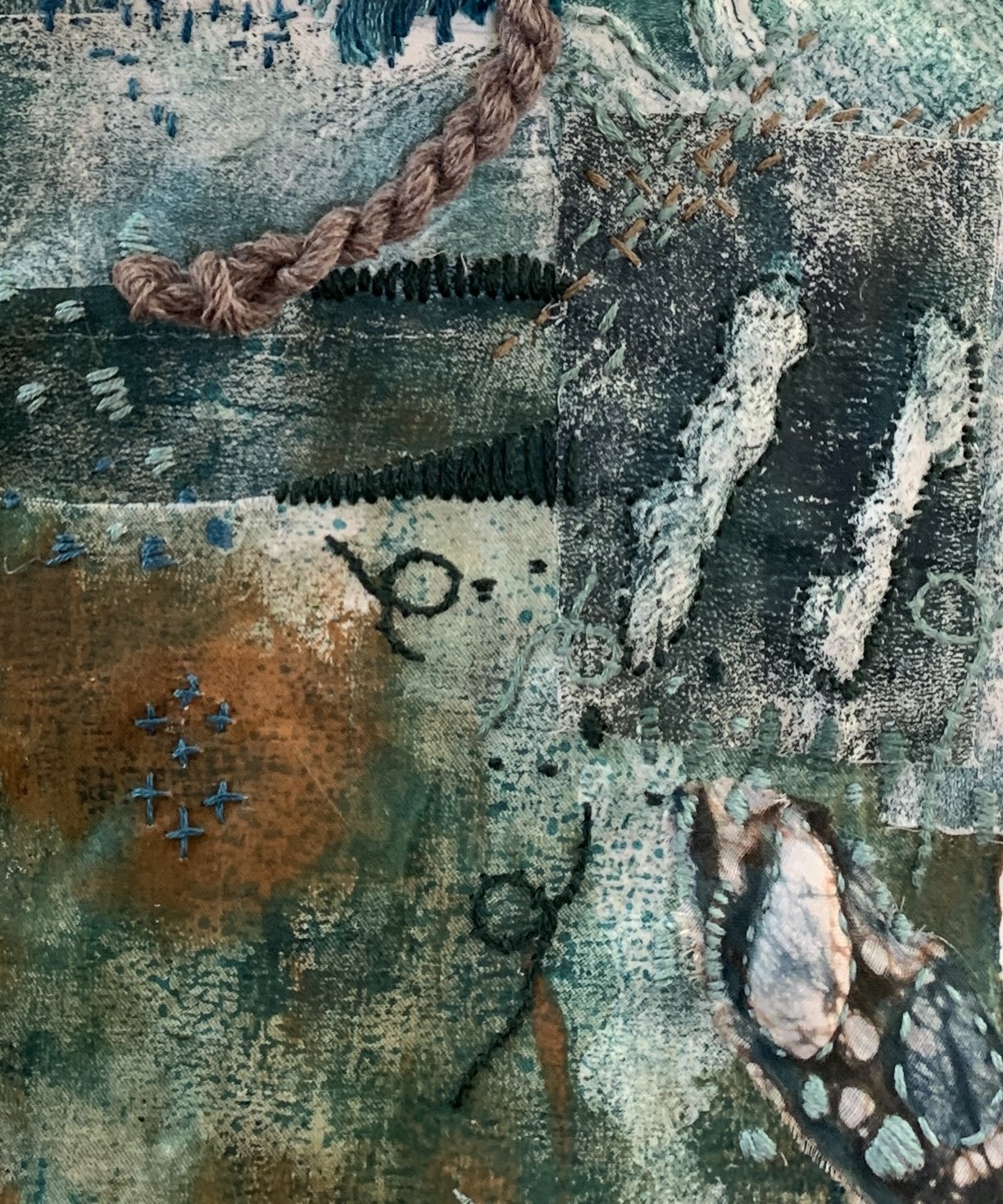Bits of Fiber in Collage
Who doesn’t love collages?! I have always enjoyed making them. Lately I’ve been doing a lot of reading by various textile artists. And I’m always looking to incorporate bits of handwoven. Although I took a brief painting class with Fort Wayne Artist, Gwen Gutwein, I believe I ended up with as much paint on my face as the canvas. Painting on paper or fabric has always been of interest to me.
Indigo and Bamboo 2018 - Natural dyed bamboo yarn, handwoven ikat sample, Dorset button, tin thread and torn paste paper
I belong to a book club and our members have some diverse reading interests. It is sometimes a challenge to pick books. In January, we chose to read self interest or “how to” types of books. I selected Encaustic Painting Techniques - The Whole Ball of Wax by Patricia Baldwin Seggebruch. It helped to prepare me for my first encaustic workshop with Encaustic Artist, Ruth Koomler. From this workshop, I found another way to incorporate my handwoven huck lace sample into art (woven in 2016).
“Huck and Wax”2021 - Cotton yarn, woven huck lace sample, wax, metallic and matte pastels, oil paint
Making Marks
Thistles, seedpods and a pencil eraser tools with acrylic paint on a cotton sheet
Making marks is essential to any painting on fabric and you don’t always have to use a brush. This was an opportunity to use dried thistles and some seedpods instead of a paintbrush all the time. The thistle ends actually made the faintest of lines. The fabric was cut apart and reconstructed into two long textile pieces. Hand-stitching was used to blur the boundaries and add further dimension. The finished pieces are off to the framer for the Orchard Gallery of Fine Arts March Theme Show. To read more about stitching to blur the boundaries, read Drawn to Stitch by Gwen Hadley.
I have so many weaving samples, thrums, and yarn that I decided to work on a Monoprint of Fiber using acrylic paint on a cotton sheet. This was so much fun! I used a gelli plate for printing. I’m even going to use some of the handwoven pieces and skeins used for printing in the collage! Better prints resulted from more open “Canvas” weave structures. In the case of Advancing Twills, I’ll use some stitching to highlight some of the yarn floats.
After visiting a lecture and opening with Mary Zicafoose, I decided to use some of my monoprints as an experiment to collage a background. Shifting warps is one weaving technique that she focuses on in her book, IKat. Although I’ve done some ikat weaving, a different challenge I gave myself was to wrap a painted warp and try out shifting on a smaller scale.
Other fabric and fiber artists I admire are Jane Dunnewald and Shelley Rhoades. I’ve recently been studying Jane’s work from Complex Cloth, A Comprehensive Guide to Surface Design. I’ve gelli-printed some beautiful block stencils on silk and made my first collagraph, a cross-section of a hickory nut I collected on a walk. I printed on paper and ice-dyed fabric and then incorporated into the Redbud Pod and Hickory Nut Cross-section. Cotton scrim and a bit of my handwoven applied with acrylic matte gel finished off the collage.
Trapunto Vintage Batik Work in Progress
My goals are to continually explore the use of fabric and fiber in collage. I have a growing number of weaving samples that I like to incorporate into art and thrums galore.








